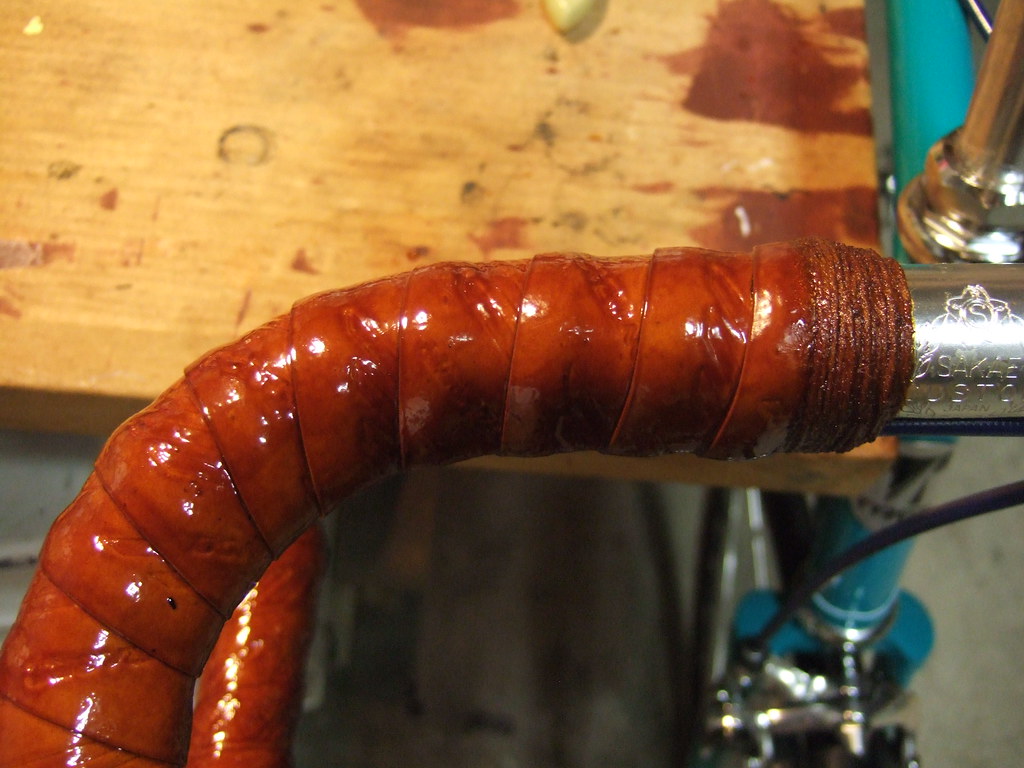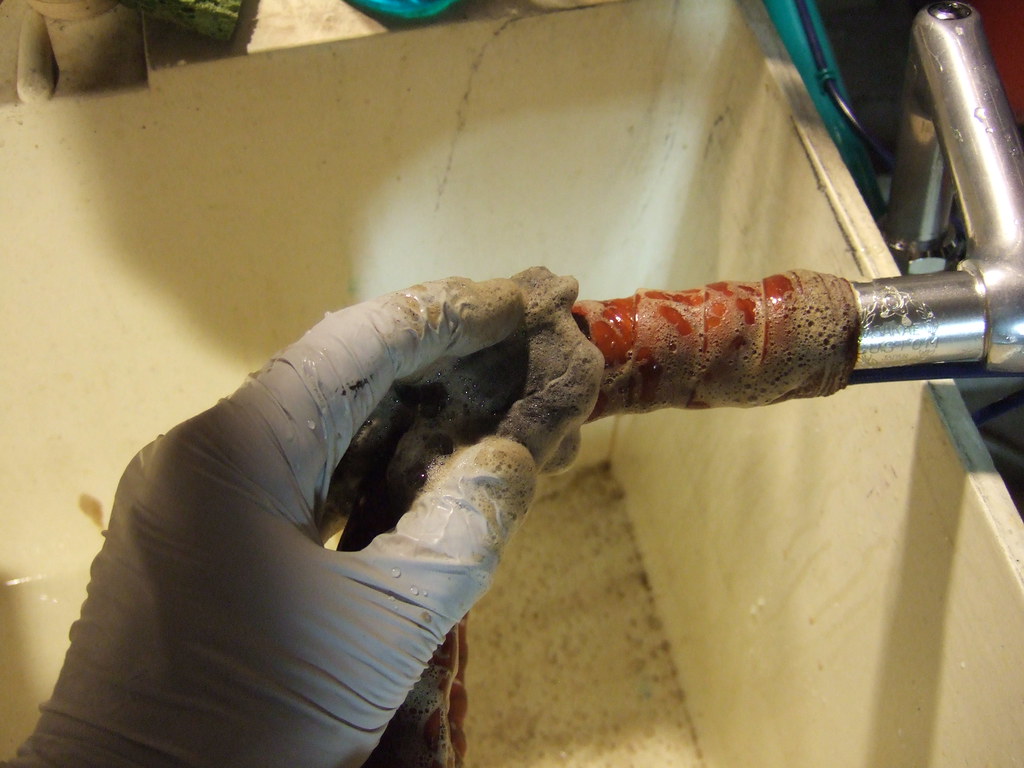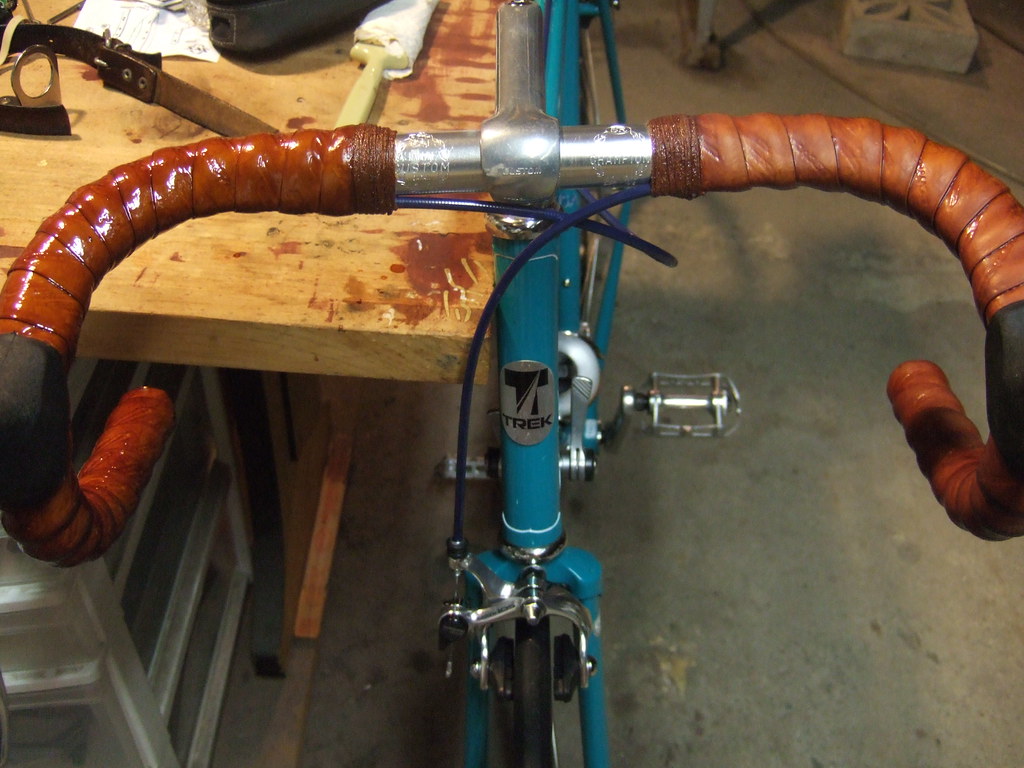As the number of bikes that I restore continues to climb, I’m finding that there are a few key workshop tools that I use over and over again to the point where they have reached “essential” status. In addition to the 5mm and 6mm hex wrenches, the 10mm, 12mm, and 15mm box wrenches, and various pliers and screwdrivers, there is one tool that particularly stands out: steel wool. In my workshop, steel wool has achieved all-star status, up there with duct tape and WD-40.
Steel wool comes in several grades of coarseness, denoted by a number: #4 is the most coarse, and smaller numbers denote decreasing coarseness. After #0 comes #00, #000, and finally #0000, the finest steel wool readily stocked by hardware stores (there may be finer, but I haven’t found them). To give you an idea of the relative courseness, #0000 is similar in roughness to a dry eraser, only softer and more compressible, like a ball of cotton.
At its basic, steel wool is an abrasive material for removing dirt, grime, rust and other types of oxidation from surfaces. In its most common role in my workshop, it is a polishing agent, used to polish up just about every aluminum and chrome surface: hubs, rims, derailleurs, handlebars, stems, seatposts, cranks, chainrings, pedals, shifters, and even ball bearing cups and cones. The advantage of steel wool is that it is soft and compressible, allowing it to conform to uneven surfaces and work its way into nooks and crannies, something sandpaper can’t do. Generally speaking, I use #000 and #0000 steel wool for most projects, and I use a variation of the “wet sanding” method exclusively: I liberally douse the steel wool with dish soap and use lots of water during sanding. The dish soap acts as a lubricant which allows the wool to work easier and to get into tighter spaces. It also helps remove grime! Below are some examples of bike components after polishing with steel wool (sorry, but I don’t have any “before” shots for comparison). This quick-release skewer was full of surface rust before polishing:

This aluminum hub was chalky grey-ish white with oxidation before polishing with steel wool:
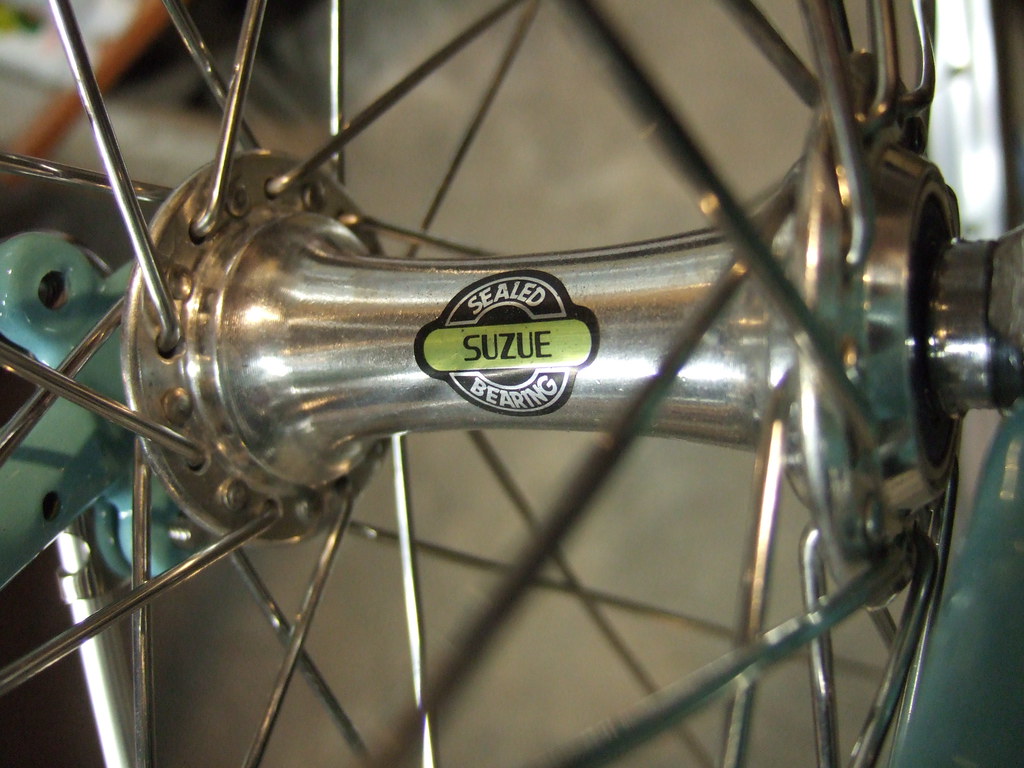
But in addition to its routine use as a metal polish, I’ve discovered more unconventional uses for steel wool. For example, when my Jeunet frame came back from the powder coater’s, I was sorely disappointed with the finish: it was so high gloss, it looked like it was wet-dipped. But worse, the powder coater had made a critical mistake and applied too much powder around the seat cluster. This caused two very thick runs to form, flowing down each seatstay. These runs were a few millimeters thick and several inches long. I had already had words with my powder coater over other issues, and at this point I wasn’t going back to demand a do-over; I wasn’t going to return to this guy ever again. I needed to devise a way to remove the runs, or else just give the frame to another powder coater and have everything redone (at significant cost). With nothing to lose, I decided to file down the runs using a grinding wheel, followed by successively finer and finer grit sandpaper, and finishing with #0000 steel wool. I very careful progressed through this sequence, and the runs were removed to my satisfaction. But, I was pleasantly surprised by an unexpected outcome: the #0000 steel wool removed the fine scratches from the sandpaper, but left a nice, dull, matte lustre to the finish. It was no longer “dripping wet” looking, but soft and matte. I was elated! Wasting no time, I proceeded to test the effect of steel wool on other parts of the frame, and three hours, several wool pads and about a tablespoon of dish soap later, I had managed to dull the entire frame and fork. I was amazed by the transformation that steel wool had on the powder coat: it had removed the high gloss, leaving behind a semi-matte lustre which seemed perfect for a bike of this vintage and style:
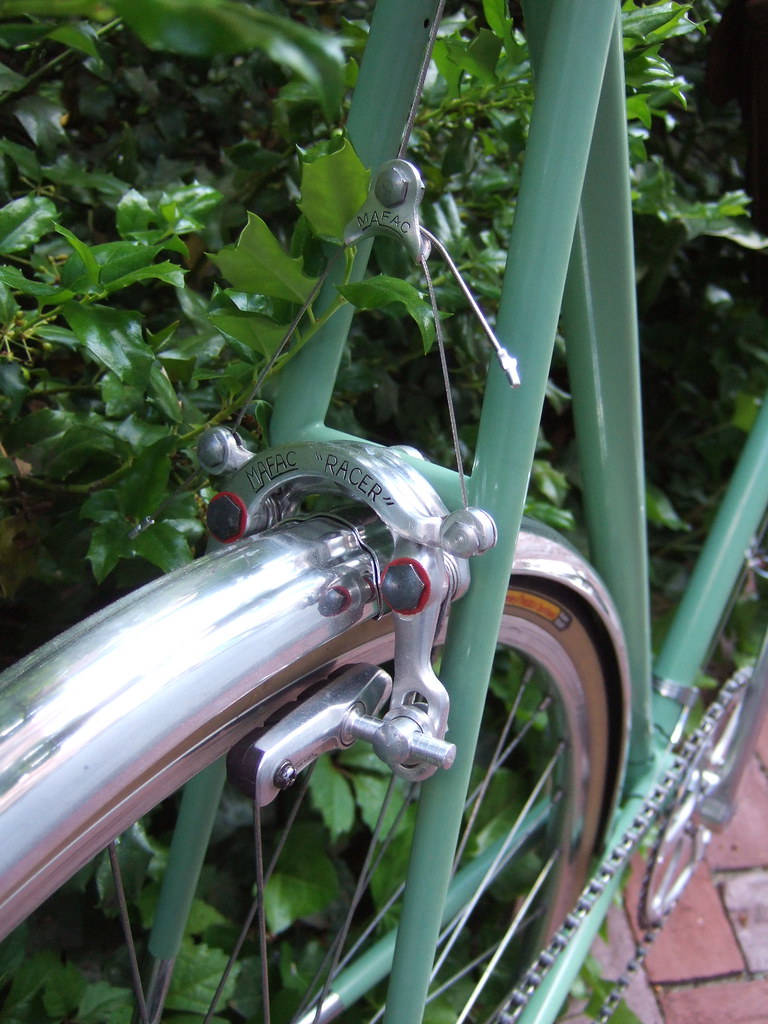
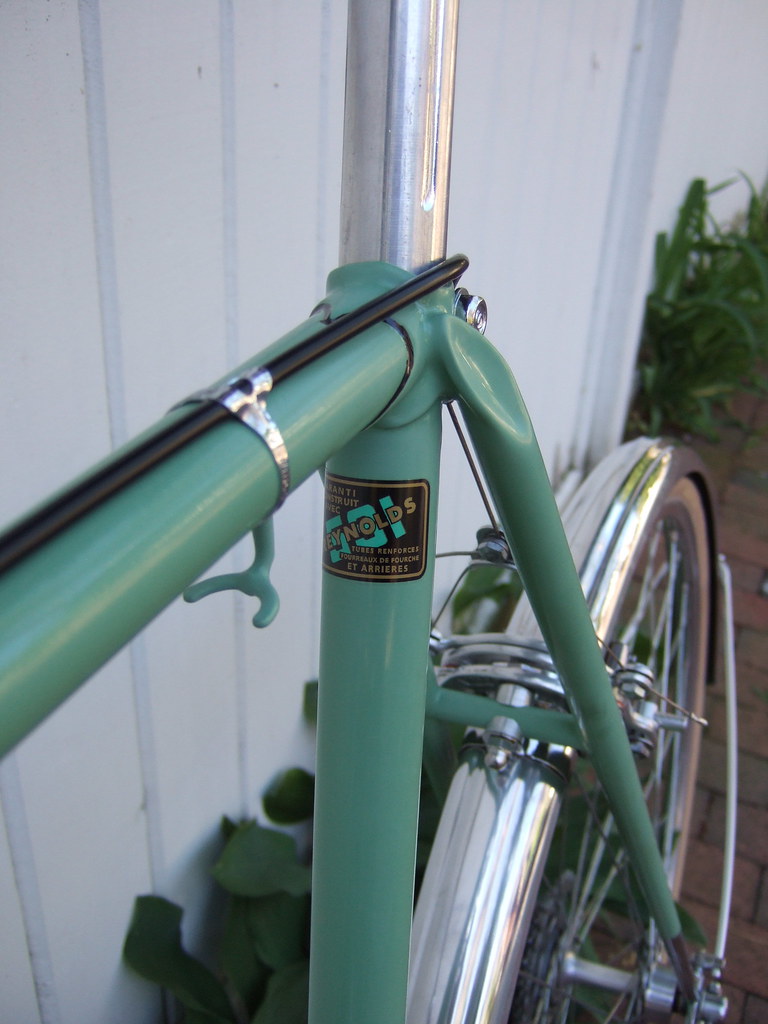
So, steel wool seems to have two opposite effects, depending on the material on which it is being used: for unfinished metal, it polishes it and removes layers of oxidation; for painted surfaces it removes any glossy finish.
Intrigued by this dichotomy, I asked what would happen if I used steel wool on this glossy shellacked handlebar tape:
Would it remove the high gloss finish of handlebar tape that’s had many coats of shellac? Or would it polish it further? Believe it or not, that shellacked bar tape was originally white:
I wanted to coat the white cork tape on this bike with amber shellac to produce a deep, red-brown leathery color. Cork tape doesn’t absorb shellac as readily as cotton, so the first few coats came out light amber, too yellowy for me. But once I applied enough coats to achieve the color depth I wanted (about six), an undesirable side effect had emerged: a high-gloss, glaringly plasticky appearance that just didn’t look right. So, in came our old friend steel wool, along with plenty of dish soap:
The effect was pretty dramatic. I don’t know if it’s captured in the picture below, but after treatment, there is a subtle, natural looking variegation that looks strikingly similar to leather:
Let’s contrast before and after. On the left in the picture below is before dulling with steel wool; on the right is after. I think the look after treatment is more subtle and natural appearing.
So, I’ve used steel wool to polish up old components, dull a frame’s powder coated finish, and dull shellacked bar tape. It truly is the velo restorer’s duct tape.

This entry was posted
on Monday, June 7th, 2010 at 3:49 pm and is filed under retronews.
You can follow any responses to this entry through the RSS 2.0 feed.
Both comments and pings are currently closed.




